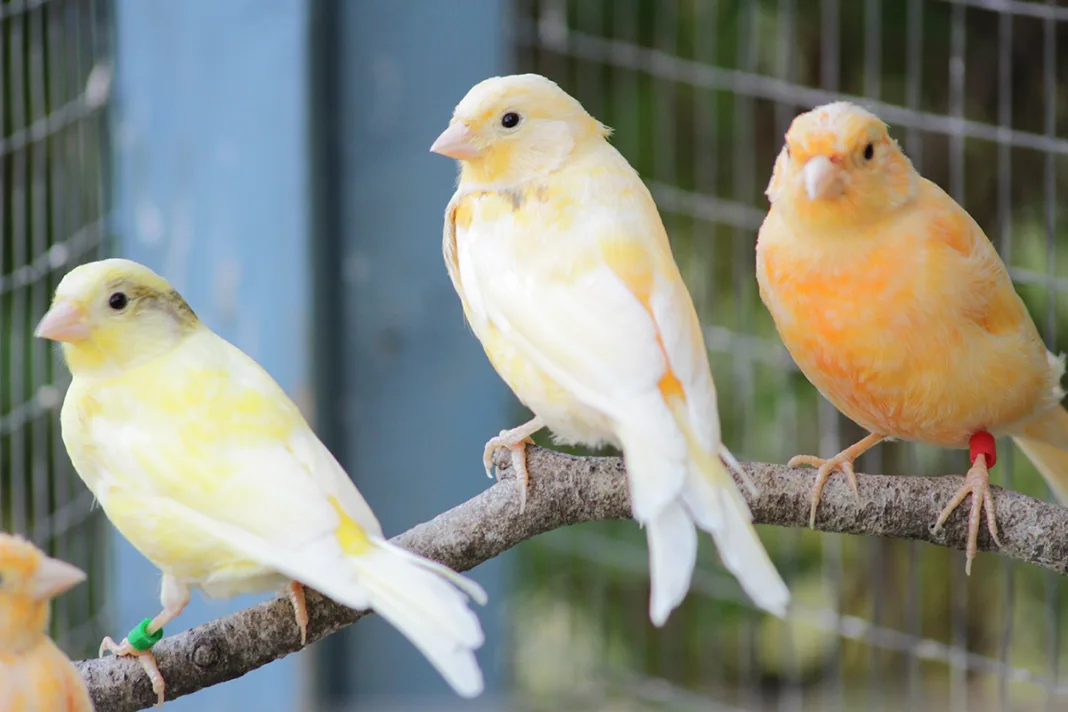TERRY KELLY introduces the current points system for Fife canaries and comments on the recent near-obsession with length
When exhibited, the Fife canary falls into the category of “type” canaries, along with the Border and Norwich. In other words, the shape more than anything determines how good a show bird it is. On the other hand new colours, for example, are judged mainly on the quality of their colour, while roller canaries are judged on the quality of their song.
To see an example of the ideal model, obtain one of Andy McEwan’s excellent paintings of Fifes and hang it in your birdroom to compare your own birds from the side angle to this perfect model. The only problem is that a painting (no matter how good) is only two-dimensional and my views on judging shape from above are well documented in this series.
Nevertheless, it is an ideal starting point. You need to see a top-quality exhibit moving from perch to perch and from all angles to appreciate the “type” in a Fife at its very best. One of the finest examples I saw last year was Barry Cauldwell’s clear yellow cock, which looked to be the perfect Fife on the occasions I saw it. It was best clear yellow cock at the North of England Fife FCC show. Barry is a good example of a young fancier showing patience, working with a small family of birds and only bringing in a good bird as an outcross.
These are the sort of things I emphasised so much last month. Fanciers north of the Border have always been in the forefront with the Fife going back many years, but it is good to see a young fancier coming through to fly the Scottish flag in the future. Viewing a Fife from all angles is vital and that is why it is shown in an all-wire cage. It shares the Dewar cage with the Border canary – another one where it is essential to have different views of the bird. One advantage to sharing this cage is that many fanciers keep both birds, as I did for a few years, and a second set of show cages is not necessary.
All varieties of type canary have a points system broken down into several categories. Before I look at each in detail, I will look at one in particular where the Fife is concerned: “size”. For as long as I can remember there has been more animated emotion around this topic than all the others put together. The ideal length (no one mentions ideal width in this points system) is 11cm (4¼in) and this aspect is allocated 25 points. This has prompted irrational statements about Fifes such as “it’s lost 25 points right away” if the bird is over this length.
Similarly, the length for a Border canary should be 14.6cm (5¾in) – keep it serious! My National Exhibition Border clear yellow cock in the year 2000 was 18cm (7in) long and I haven’t seen them getting smaller since then. Judge the Fife as a whole and not in bits and pieces from the list of categories of the model. (I will explain more on judging in a future issue.)
The thorny subject of size in Fifes was an emotive subject 30 years ago and no doubt will still be long after I am dead. I must say, however, that I have never seen any Fife fancier in all these years who had really good Fifes jumping up and down about size. The current breakdown of points is allocated as: head, 10; body, 10; wings, 10; legs, five; plumage, 10; position, 10; tail, five; colour, 10; health, five; size, 25. Total: 100.
Terry Kelly is the author of the bestselling The Fife Canary, available from: www.fifecanaries.com
Find more news and articles like this on the Cage & Aviary Birds website. Subscribe to Cage & Aviary Birds magazine now.


